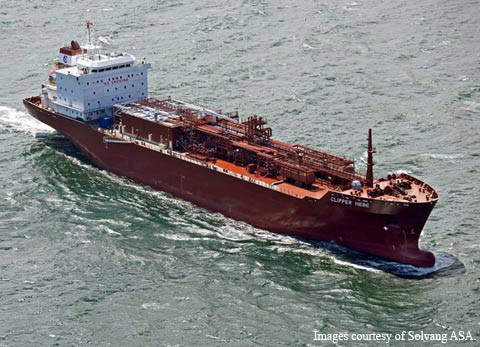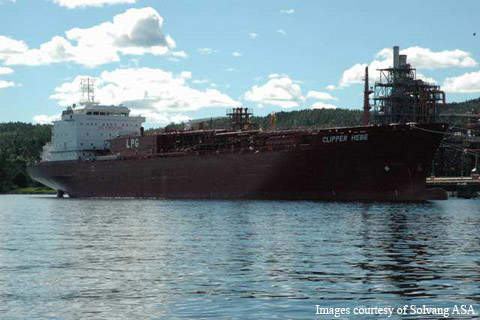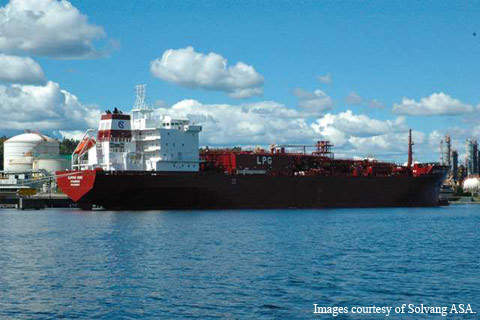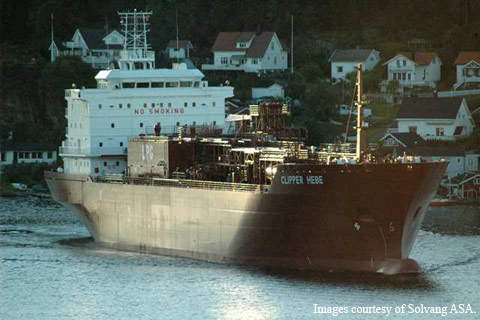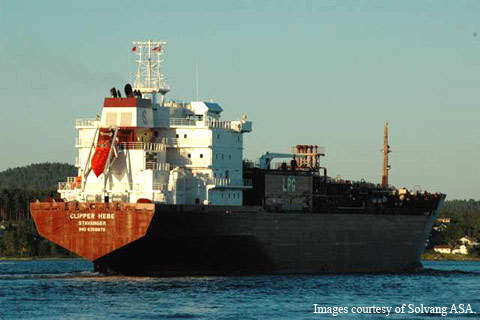The Clipper Hebe (hull no 653) is the first in a series of four LEG / LPG carriers constructed by the German Meyer Werft shipyards for the Norwegian shipping company Solvang ASA. Clipper Helen, Clipper Hermes and Clipper Hermod are the other three vessels in the series.
Det Norske Veritas (DNV) classified the Clipper Hebe as a tanker for liquefied gas.
The vessel was built to carry ethylene and vinyl chloride monomer. The tanks and cooling systems were designed to allow the ship to be versatile enough to carry a variety of other chemicals including ammonia and propylene oxide.
Construction
Solvang placed the order for construction of the four tankers in June 2005. Keel of the first vessel, Clipper Hebe, was laid in September 2006. The vessel was launched from the Papenberg yard in February 2007. She was delivered in July 2007.
Following the successful delivery of the Clipper Hebe, the delivery of the Clipper Helen, the second ship in the series, occurred in November 2007. The third gas tanker, Hermes Clipper, was delivered in July 2008. The fourth gas tanker was named Clipper Hermod. She was delivered in October 2008.
Trials
Clipper Hebe underwent gas trials at Rafnes in Norway immediately after launching and the gas plant was successfully commissioned using ethylene cargo by engineers from TGE Gas Engineering. TGE handled the detail design and engineering of the cargo deck tanks, the cargo handling system and the delivery of the gas handling equipment.
Some of the components of the ship, including cargo tanks fabricated from low temperature steel, were supplied by Neptun Yard (Rostock, Warnemunde), which is allied to Meyer Werft at Papenberg.
Ship specifications
The Clipper Hebe has 22 crew cabins, a length of 154.9m, a beam (moulded) of 22.7m, a perpendicular length of 147.40m and a depth to the main deck of 14.95m. Draught when carrying ethylene is 8.10m, draught when carrying (VCM) is 10.60m, summer draft is 10.55m, deadweight when carrying (VCM) is 18,110t and cargo tank capacity is is 17,000m3.
Propulsion systems
The main engine for the ship is a Wärtsilä / Sulzer 6RT-flex50, which has an output of 9,720kW, making the vessel capable of 17.7kt (80% MCR).
The Wärtsilä/Sulzer 6RT-flex50 low-speed diesel engine operates at a speed of 124rpm. The Sulzer RT-flex series of engines are the first low-speed diesel engines to utilise electronically controlled common rail systems for the fuel injection and valve actuation systems.
The advantages of this are smokeless operation at all operating speeds, lower fuel consumption, reduced maintenance costs and also lower steady operating speeds for better manoeuvring. The engine can be operated in variable speed mode within a range of from 88rpm to 124rpm.
The vessel is also fitted with three Wartsila 6L20 main generator diesel engines. There are two side thrusters and a Man B&W controllable pitch propeller.
The vessel is provided with two thermal oil heaters; one is exhaust heated and the second is oil fired.

